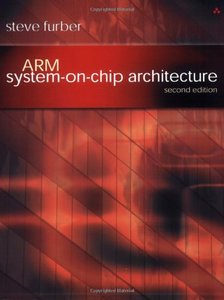Understanding Search Engines: Mathematical Modeling and Text Retrieval, 2/e
Michael W. Berry, Murray Browne
- 出版商: siam
- 出版日期: 2005-05-01
- 售價: $1,877
- 語言: 英文
- 頁數: 184
- 裝訂: Paperback
- ISBN: 0898715814
- ISBN-13: 9780898715811
-
相關分類:
Text-mining
下單後立即進貨 (約5~7天)
買這商品的人也買了...
-
 ARM System-on-Chip Architecture, 2/e ( 美國原版)
ARM System-on-Chip Architecture, 2/e ( 美國原版)$2,730$2,594 -
 Mastering Regular Expressions, 2/e
Mastering Regular Expressions, 2/e$1,510$1,435 -
 建構嵌入式 Linux 系統
建構嵌入式 Linux 系統$780$616 -
 Excel 2003 VBA 程式設計
Excel 2003 VBA 程式設計$480$374 -
 Linux 程式設計教學手冊
Linux 程式設計教學手冊$780$616 -
 Linux iptables 技術實務─防火牆、頻寬管理、連線管制
Linux iptables 技術實務─防火牆、頻寬管理、連線管制$620$527 -
 Shell Programming 333 個應用範例技巧大全集
Shell Programming 333 個應用範例技巧大全集$560$437 -
 嵌入式系統設計與實習 -- ARM 7 與 Linux 之結合基礎篇
嵌入式系統設計與實習 -- ARM 7 與 Linux 之結合基礎篇$560$549 -
 Linux 架站實務 2006-MIS、規劃、架設、管理、防毒
Linux 架站實務 2006-MIS、規劃、架設、管理、防毒$650$553 -
 新一代 ASP.NET 2.0 網站開發實戰-使用C# 以及 VB
新一代 ASP.NET 2.0 網站開發實戰-使用C# 以及 VB$550$468 -
 VoIP 網路電話技術
VoIP 網路電話技術$350$277 -
 跟 Adobe 徹底研究 Illustrator CS2 (Adobe Illustrator CS2 Classroom in a Book)
跟 Adobe 徹底研究 Illustrator CS2 (Adobe Illustrator CS2 Classroom in a Book)$620$527 -
 USB 2.0、Wireless USB、USB OTG 技術徹底研究 (USB Complete, 3/e)
USB 2.0、Wireless USB、USB OTG 技術徹底研究 (USB Complete, 3/e)$860$731 -
 資料庫系統原理 (Fundamentals of Database Systems, 4/e)
資料庫系統原理 (Fundamentals of Database Systems, 4/e)$860$679 -
 C++ 語法暨程式庫式標準辭典 (C++ in a Nutshell)
C++ 語法暨程式庫式標準辭典 (C++ in a Nutshell)$780$616 -
 Flash 8 神魂顛倒
Flash 8 神魂顛倒$550$435 -
 軟體預先架構之美學 (Prefactoring)
軟體預先架構之美學 (Prefactoring)$580$458 -
 如何設計好網站 (Don't Make Me Think: A Common Sense Approach to Web Usability, 2/e)
如何設計好網站 (Don't Make Me Think: A Common Sense Approach to Web Usability, 2/e)$450$383 -
 Design!玩設計─Photoshop 材質、UI、擬真繪圖
Design!玩設計─Photoshop 材質、UI、擬真繪圖$480$379 -
 超越 Java:探討程式語言的未來 (Beyond Java)
超越 Java:探討程式語言的未來 (Beyond Java)$450$356 -
 入侵偵測系統實務 WinSnort for Windows 2003 Server
入侵偵測系統實務 WinSnort for Windows 2003 Server$190$150 -
 鳥哥的 Linux 私房菜基礎學習篇, 2/e
鳥哥的 Linux 私房菜基礎學習篇, 2/e$780$663 -
 ASP.NET 2.0 網頁製作徹底研究, 2/e
ASP.NET 2.0 網頁製作徹底研究, 2/e$660$561 -
 Microsoft SQL Server 2005 設計實務
Microsoft SQL Server 2005 設計實務$680$578 -
 The Object Primer, 3/e中文版--靈活模型驅動開發與UML 2(The Object Primer, 3/e-Agile Model-Driven Development with UML 2.0)
The Object Primer, 3/e中文版--靈活模型驅動開發與UML 2(The Object Primer, 3/e-Agile Model-Driven Development with UML 2.0)$580$458
相關主題
商品描述
Description
There is no other information retrieval/search book where the heart is the mathematical foundations. This book is greatly needed to further establish information retrieval as a serious academic, as well as practical and industrial, area. --Jaime Carbonell, Carnegie Mellon University.
Berry and Browne describe most of what you need to know to design your own search engine. Their strength is the description of the solid mathematical underpinnings at a level that is understandable to competent engineering undergraduates, perhaps with a bit of instructor guidance. They discuss the algorithms used by most commercial search engines, so you may find your use of Google and its kind becomes more effective, too. --George Corliss, Marquette University.
This book gives a valuable, generally non-technical, insight into how search engines work, how to improve the users' success in Information Retrieval (IR), and an in-depth analysis of a mathematical algorithm for improving a search engine's performance. Written in an informal style, the book is easy to read and is a good introduction on how search engines operate?--Christopher Dean, Mathematics Today, October 1999.
The second edition of Understanding Search Engines: Mathematical Modeling and Text Retrieval follows the basic premise of the first edition by discussing many of the key design issues for building search engines and emphasizing the important role that applied mathematics can play in improving information retrieval. The authors discuss important data structures, algorithms, and software as well as user-centered issues such as interfaces, manual indexing, and document preparation.
Readers will find that the second edition includes significant changes that bring the text up to date on current information retrieval methods. For example, the authors have added a completely new chapter on link-structure algorithms used in search engines such as Google, and the chapter on user interface has been rewritten to specifically focus on search engine usability. To reflect updates in the literature on information retrieval, the authors have added new recommendations for further reading and expanded the bibliography. In addition, the index has been updated and streamlined to make it more reader friendly.
Table of Contents
Preface to the Second Edition; Preface to the First Edition; Chapter 1: Introduction; Chapter 2: Document File Preparation; Chapter 3: Vector Space Models; Chapter 4: Matrix Decompositions; Chapter 5: Query Management; Chapter 6: Ranking and Relevance Feedback; Chapter 7: Searching by Link Structure; Chapter 8: User Interface Considerations; Chapter 9: Further Reading; Bibliography; Index.












